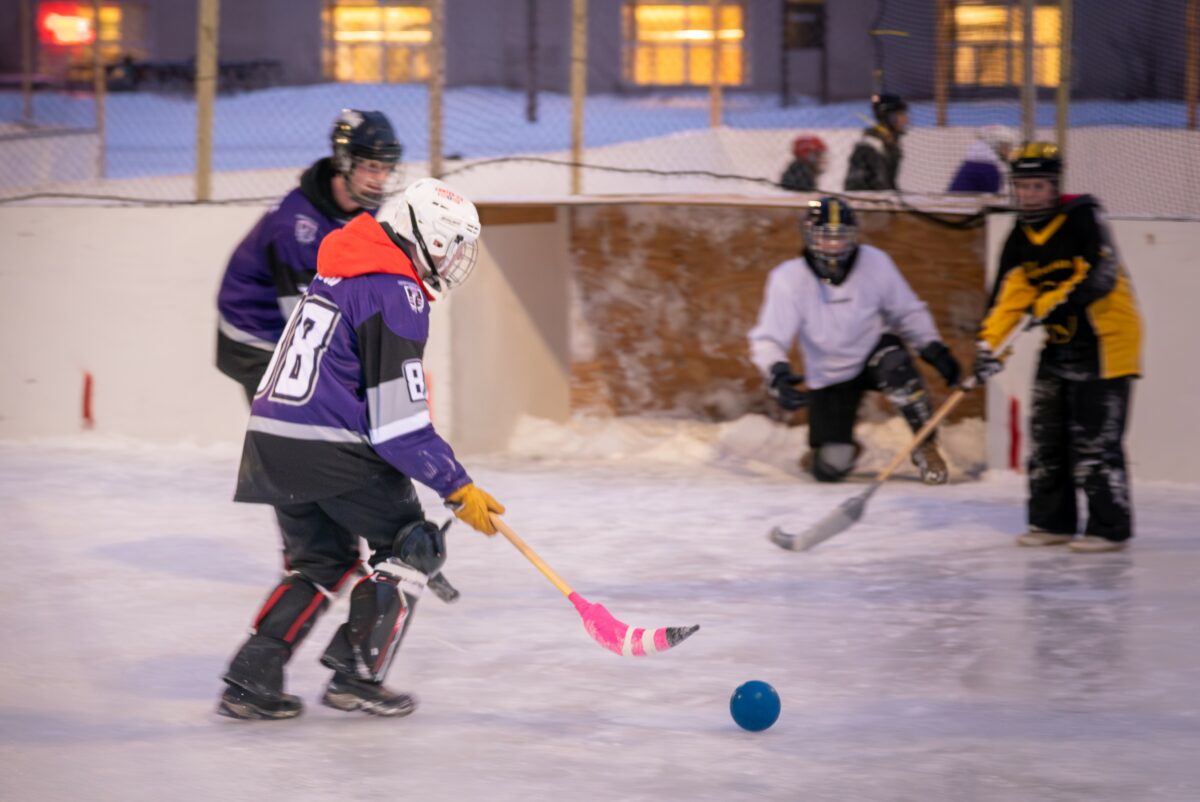With the broomball season drawing to a close early this year due to abnormally warm weather, The Lode met with broomball rink manager Joe Dlugos to gain insight into the work that it takes to create and sustain the broomball rinks during the season.
To start, the work of a broomball rink manager begins a week before the start of the spring semester, with the rinks being flooded using a firehose to start gradually building up a base layer of ice a few inches per day, with the end goal being to have six to twelve inches of ice by the end of the week to start off the semester. This initial week of flooding is done by the broomball manager along with seven other rink supervisors, who all put in six to eight hours of work over the course of a day, as the ice is flooded multiple times each day.
Once the semester starts, the work doesn’t slow down. The rink manager and supervisors are joined by a few dozen more rink staff who work around three shifts per day for the entirety of the broomball season. During their shifts, the rink staff shovel all the snow off the rinks so that it doesn’t freeze onto the ice creating small, jagged bumps in the surface. The staff members will also fill in holes in the ice using slush, which quickly freezes into the ice. At midnight after the last game of the day, the third shift of rink staff work to level out any bumps or holes in the ice and flood the rink with water, resulting in a perfectly smooth and glassy ice surface by the next morning.
Unfortunately, the rink staff are always working against the weather, which typically does not provide ideal conditions. For example, if it starts snowing overnight, the rink staff can’t flood the rinks at the end of the day because the snow will freeze to the ice, creating a rough, pitted surface that isn’t slippery at all. Snow can also pack into holes on the ice, creating an inconsistent surface with patches of slippery ice and grippy snow.
On the other hand, warm weather melts away the base layer of ice, requiring colder weather before it can be built back up to the ideal thickness. Additionally, on warm or sunny days the ice is much softer and can be damaged easily by a full schedule of broomball games. This requires rink staff to put in extra work repairing holes between games and at the end of the day. However, damage of this nature can only truly be fixed with a full flooding of the rink. In worst case scenarios, like this past season with multiple weeks of warm weather, the entire base layer of ice melts away, requiring extended cold periods to completely rebuild the rinks before the broomball season can resume.





